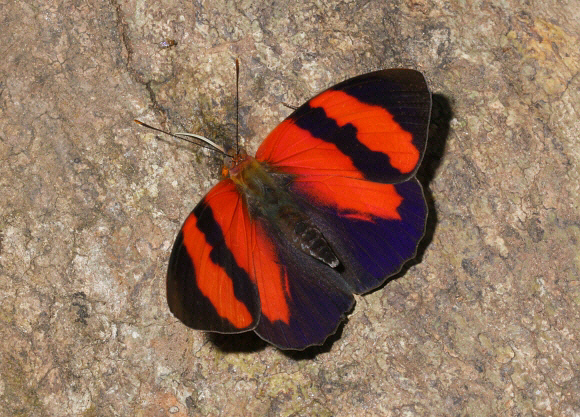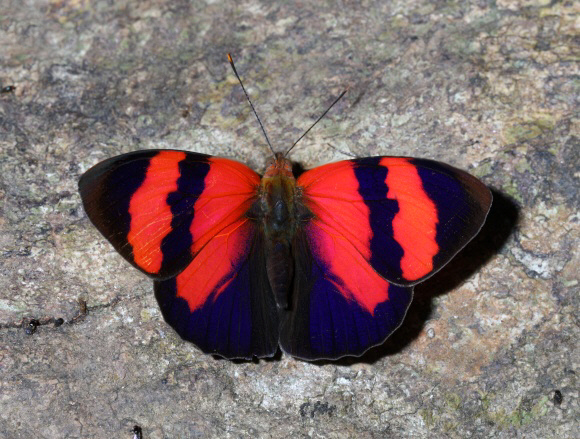 Temenis pulchra, male, Satipo, Peru – Adrian Hoskins
Temenis pulchra, male, Satipo, Peru – Adrian Hoskins
Introduction
The genus Temenis is closely allied to Epiphile and Nica, in which the adults are structurally very similar. The 3 genera are biologically distinguished by differences in larval morphology.
There are 3 Temenis species, all of which look beautiful in photographs, but even more stunning in real life, particularly pulchra, the red and black wings of the male being overlaid with a shimmering iridescent blue-purple sheen that is seen at it’s best when the butterfly is in movement.
The theme of broad red bands on a black ground colour is common among neotropical butterflies, which suggests the likelihood of convergent evolution producing a Batesian / Mullerian mimicry ring involving Temenis pulchra and various species from the genera Agrias, Callicore and Altinote.
The female of pulchra is rarely seen, and occurs occurs in several forms. In some examples it can be similar in pattern to the male, but with orange bands instead of red; but in others it may have a single broad orange band, in combination with a large round blue patch on the hindwings.
Temenis pulchra is known from Panama, Colombia, Ecuador, Peru and southern Brazil, but probably also occurs in Bolivia.
Habitats
This species is found mainly in primary rainforest and transitional rainforest / cloudforest habitats at altitudes between about 100-1400m.
Lifecycle
The eggs are white, and laid singly on leaves of Serjania, Paullinia, Cardiospermum, Urvillea and other shrubs and vines in the family Sapindaceae. These plants contain toxins which are probably sequestered by pulchra larvae, and passed on to the adult butterflies, rendering them unpalatable and noxious to birds.
Adult behaviour
The butterflies spend most of their time high in the forest canopy, although a male will occasionally descend to ground level to imbibe moisture from damp sand, peccary wallows, or from nooks and crannies in the trunks of fallen trees. In hot conditions they keep their wings closed while feeding, but it is more usual for them to adopt a half-open position, or to slowly fan their wings as they walk about on the substrate.

Temenis pulchra, male, Satipo, Peru – Peter Bruce-Jones
